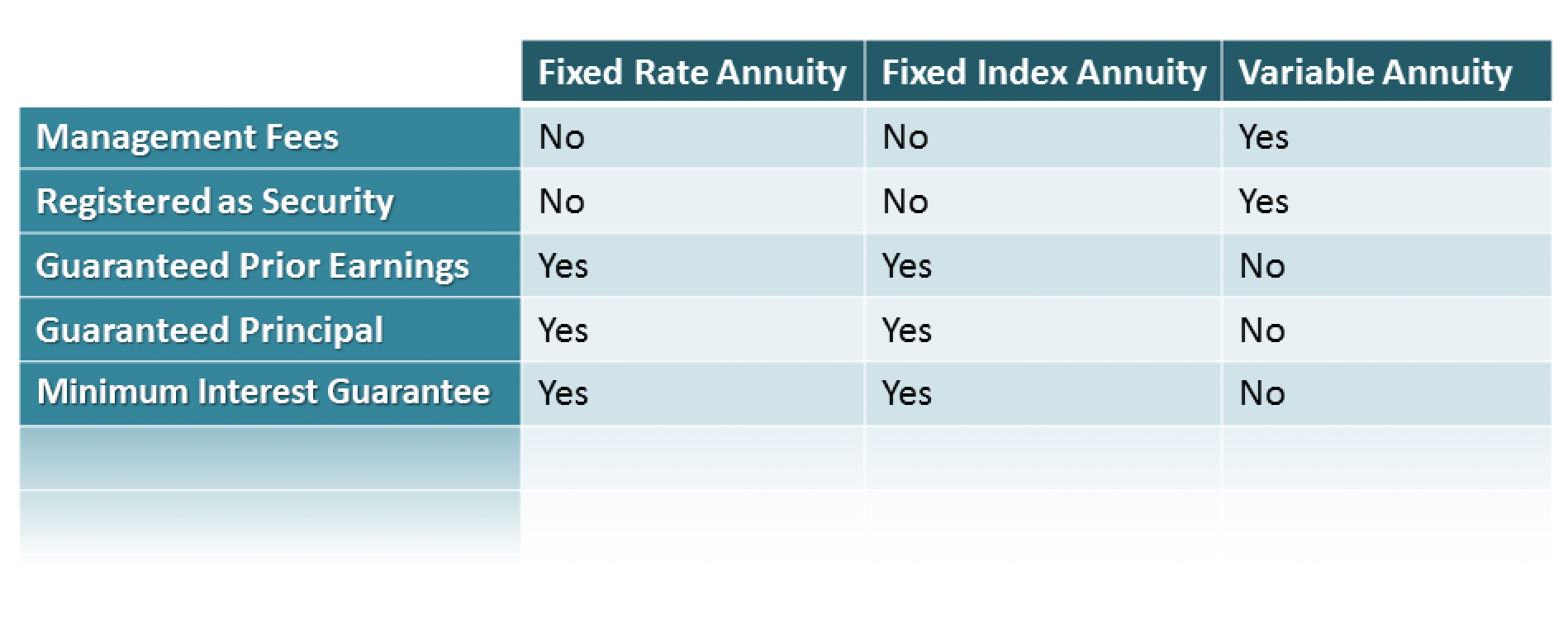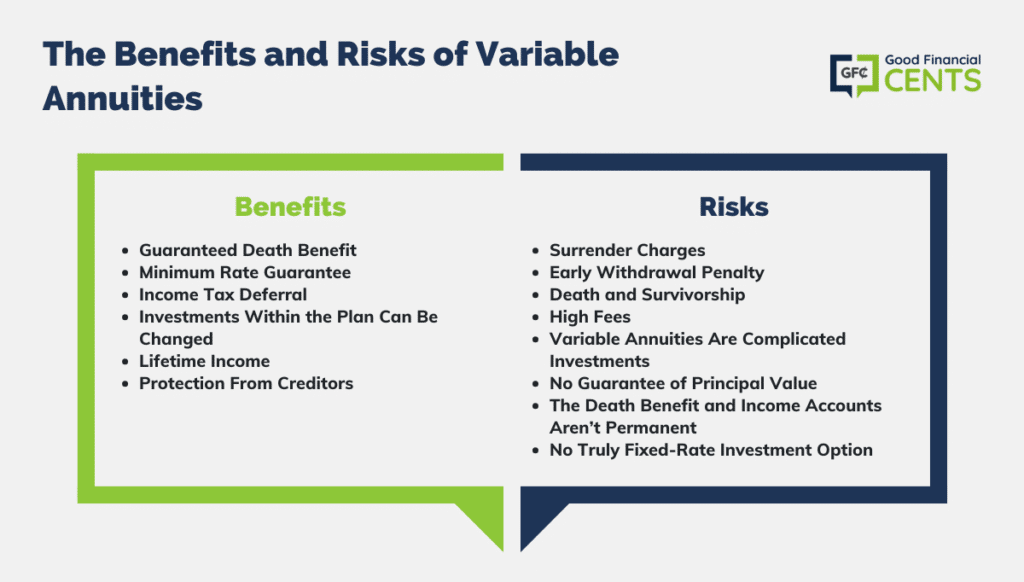All Categories
Featured
Table of Contents
Equally as with a repaired annuity, the owner of a variable annuity pays an insurer a round figure or collection of repayments for the pledge of a series of future payments in return. As stated over, while a dealt with annuity expands at an assured, continuous price, a variable annuity expands at a variable price that depends upon the performance of the underlying investments, called sub-accounts.

During the accumulation stage, assets invested in variable annuity sub-accounts grow on a tax-deferred basis and are tired only when the agreement owner takes out those revenues from the account. After the accumulation stage comes the revenue phase. In time, variable annuity properties must theoretically raise in worth till the contract owner decides she or he would like to begin taking out money from the account.
The most significant problem that variable annuities normally present is high cost. Variable annuities have a number of layers of costs and expenditures that can, in accumulation, create a drag of up to 3-4% of the agreement's value each year.
Analyzing Strategic Retirement Planning A Comprehensive Guide to Fixed Income Annuity Vs Variable Annuity Breaking Down the Basics of Investment Plans Features of Smart Investment Choices Why Choosing the Right Financial Strategy Can Impact Your Future How to Compare Different Investment Plans: A Complete Overview Key Differences Between Different Financial Strategies Understanding the Rewards of Long-Term Investments Who Should Consider Annuities Variable Vs Fixed? Tips for Choosing the Best Investment Strategy FAQs About Planning Your Financial Future Common Mistakes to Avoid When Planning Your Retirement Financial Planning Simplified: Understanding Your Options A Beginner’s Guide to Smart Investment Decisions A Closer Look at Fixed Index Annuity Vs Variable Annuities
M&E expense charges are calculated as a percentage of the contract value Annuity providers hand down recordkeeping and various other management prices to the agreement owner. This can be in the type of a level yearly fee or a portion of the contract value. Management charges may be included as component of the M&E threat charge or may be evaluated individually.
These fees can vary from 0.1% for easy funds to 1.5% or more for proactively handled funds. Annuity agreements can be tailored in a variety of means to offer the certain demands of the agreement proprietor. Some usual variable annuity riders consist of guaranteed minimum build-up advantage (GMAB), ensured minimum withdrawal benefit (GMWB), and assured minimum earnings benefit (GMIB).

Variable annuity contributions supply no such tax deduction. Variable annuities often tend to be extremely inefficient vehicles for passing wealth to the following generation because they do not appreciate a cost-basis change when the initial contract proprietor dies. When the owner of a taxed investment account passes away, the cost bases of the investments kept in the account are adapted to mirror the marketplace costs of those investments at the time of the proprietor's fatality.
Understanding Immediate Fixed Annuity Vs Variable Annuity A Closer Look at Fixed Vs Variable Annuities Breaking Down the Basics of Pros And Cons Of Fixed Annuity And Variable Annuity Benefits of Fixed Index Annuity Vs Variable Annuities Why Choosing the Right Financial Strategy Is Worth Considering How to Compare Different Investment Plans: Simplified Key Differences Between Variable Vs Fixed Annuities Understanding the Risks of Long-Term Investments Who Should Consider Strategic Financial Planning? Tips for Choosing Choosing Between Fixed Annuity And Variable Annuity FAQs About Planning Your Financial Future Common Mistakes to Avoid When Choosing Tax Benefits Of Fixed Vs Variable Annuities Financial Planning Simplified: Understanding Your Options A Beginner’s Guide to Smart Investment Decisions A Closer Look at Annuity Fixed Vs Variable
Beneficiaries can inherit a taxable investment portfolio with a "clean slate" from a tax obligation perspective. Such is not the case with variable annuities. Investments held within a variable annuity do not obtain a cost-basis modification when the original owner of the annuity passes away. This indicates that any type of collected unrealized gains will be passed on to the annuity owner's beneficiaries, in addition to the linked tax concern.
One considerable problem associated to variable annuities is the capacity for problems of rate of interest that might feed on the part of annuity salesmen. Unlike a monetary consultant, who has a fiduciary responsibility to make financial investment decisions that profit the client, an insurance policy broker has no such fiduciary commitment. Annuity sales are extremely rewarding for the insurance professionals that offer them since of high in advance sales payments.

Many variable annuity contracts include language which puts a cap on the portion of gain that can be experienced by specific sub-accounts. These caps prevent the annuity proprietor from totally joining a part of gains that might or else be appreciated in years in which markets produce substantial returns. From an outsider's point of view, it would certainly seem that financiers are trading a cap on financial investment returns for the aforementioned assured flooring on financial investment returns.
As noted over, surrender fees can severely limit an annuity proprietor's ability to move possessions out of an annuity in the very early years of the contract. Better, while most variable annuities enable contract proprietors to withdraw a defined quantity throughout the accumulation stage, withdrawals yet amount normally cause a company-imposed charge.
Withdrawals made from a fixed rate of interest rate financial investment option can additionally experience a "market worth modification" or MVA. An MVA readjusts the worth of the withdrawal to mirror any type of adjustments in rates of interest from the moment that the cash was invested in the fixed-rate choice to the moment that it was withdrawn.

Fairly usually, even the salesmen who sell them do not totally understand just how they work, and so salesmen in some cases exploit a customer's feelings to sell variable annuities instead of the qualities and suitability of the items themselves. Our company believe that investors should completely recognize what they have and just how much they are paying to have it.
Analyzing Strategic Retirement Planning Key Insights on Annuities Fixed Vs Variable What Is Deferred Annuity Vs Variable Annuity? Benefits of Choosing the Right Financial Plan Why Fixed Annuity Vs Variable Annuity Is a Smart Choice How to Compare Different Investment Plans: Simplified Key Differences Between What Is A Variable Annuity Vs A Fixed Annuity Understanding the Key Features of Long-Term Investments Who Should Consider Fixed Annuity Vs Equity-linked Variable Annuity? Tips for Choosing the Best Investment Strategy FAQs About Fixed Index Annuity Vs Variable Annuity Common Mistakes to Avoid When Planning Your Retirement Financial Planning Simplified: Understanding Annuities Variable Vs Fixed A Beginner’s Guide to Smart Investment Decisions A Closer Look at How to Build a Retirement Plan
Nonetheless, the very same can not be said for variable annuity assets held in fixed-rate investments. These properties legally belong to the insurance provider and would certainly as a result go to threat if the firm were to fall short. In a similar way, any warranties that the insurance provider has actually accepted offer, such as an ensured minimal revenue advantage, would remain in question in case of a company failing.
Prospective buyers of variable annuities should understand and take into consideration the financial problem of the issuing insurance policy business before getting in into an annuity agreement. While the benefits and downsides of numerous types of annuities can be debated, the real issue surrounding annuities is that of suitability.
After all, as the stating goes: "Purchaser beware!" This article is prepared by Pekin Hardy Strauss, Inc. Choosing between fixed and variable annuities. ("Pekin Hardy," dba Pekin Hardy Strauss Riches Management) for educational functions only and is not intended as an offer or solicitation for company. The details and data in this post does not make up legal, tax, accounting, investment, or other professional recommendations
Table of Contents
Latest Posts
Highlighting the Key Features of Long-Term Investments A Closer Look at How Retirement Planning Works What Is the Best Retirement Option? Pros and Cons of Various Financial Options Why Choosing the Ri
Exploring Annuities Variable Vs Fixed A Closer Look at Fixed Vs Variable Annuity Pros And Cons Breaking Down the Basics of Immediate Fixed Annuity Vs Variable Annuity Advantages and Disadvantages of F
Understanding Financial Strategies Everything You Need to Know About Retirement Income Fixed Vs Variable Annuity Defining Fixed Interest Annuity Vs Variable Investment Annuity Pros and Cons of Variabl
More
Latest Posts